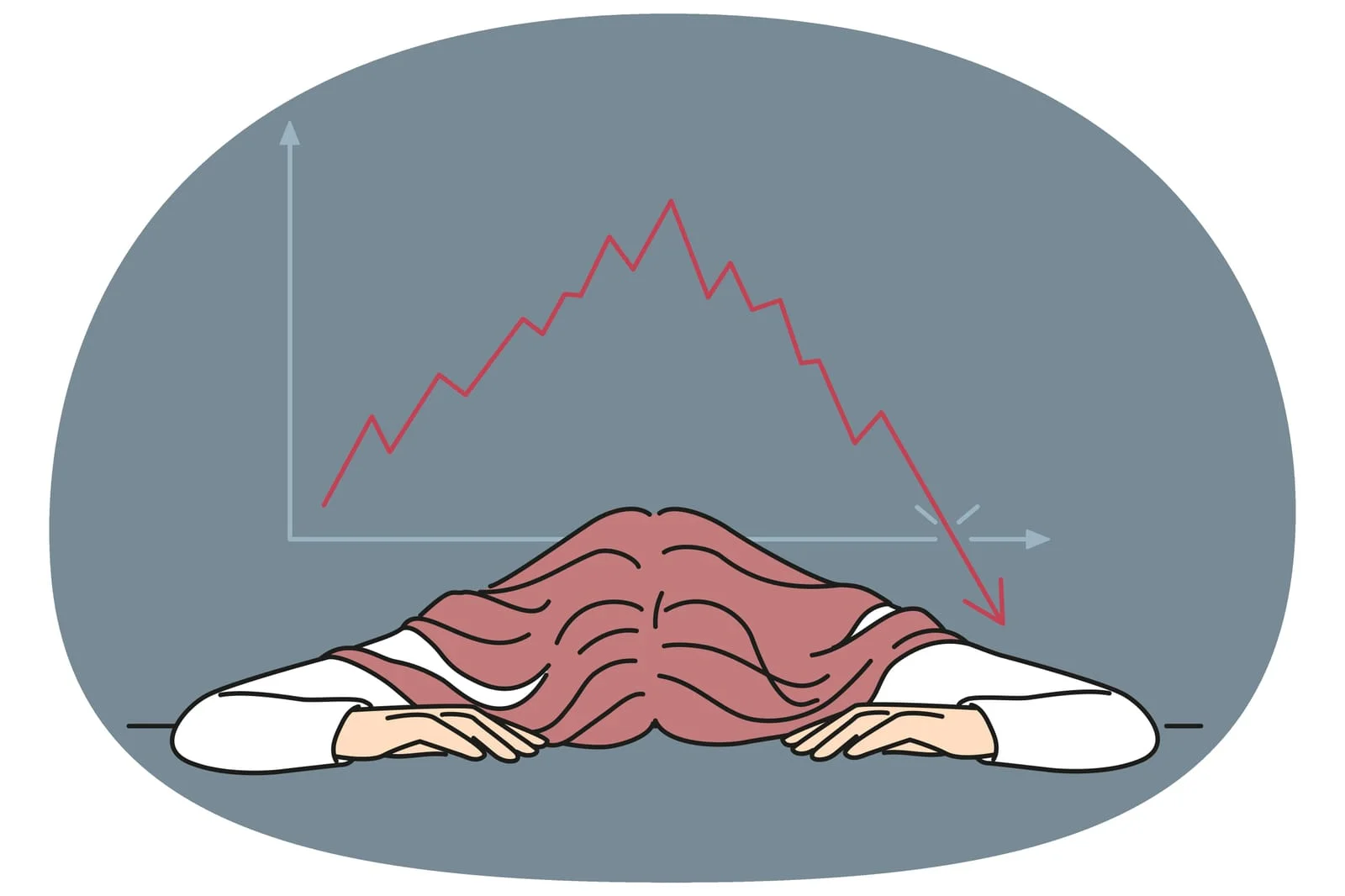Consistent website traffic is essential. Steady visitors to your website can increase brand recall, extend the reach your company has, particularly with backlinks and social media shares. When you have a sudden drop in website traffic, it can cause a great deal of anxiety and urgency, wondering whether your growth will stop entirely, whether you are no longer visible, and whether the trust you have built with your audience is now broken.
This article will identify common causes of sudden traffic drops and provide quick fixes.

A sudden drop in website traffic – possible causes
Why is my website traffic dropping? Let’s look at some of the top reasons.
#1. Google Algorithm Updates
Google algorithm updates can cause website traffic drop scenarios if the update impacts how the search results determine which site shows up. Google’s updates are designed to improve search experiences by filtering out things like unethical websites or spam websites with too much duplicate content and, on the other end, by prioritizing websites with valuable, high-quality content.
So, if you are asking, “Why is my website losing traffic?” it might be that Google thinks your website content should be improved in order to align with the new search parameters.
Quick fixes:
-Monitor Google announcements and industry news
-Use tools like SEMrush or Ahrefs to analyze changes
-Adjust your SEO strategy based on the update’s focus
#2. Technical Issues
There are several common technical issues that can lead to low website traffic. Broken links are one of the most common as are issues with site indexing. This can happen when you push an update or publish new content on your website and it misreads certain links with similar URLs as being duplicate pages and then punishes your website as a result.
You might also have issues with 404 errors or server downtime. 404 errors can negatively impact the user experience. If a user puts in a link that leads to a 404 page, they will go to a different website, usually your competitor.
Similarly, if you have server downtime because your server can’t handle the amount of traffic it’s experiencing, this can cause it to overload and crash. This means organic searches and other customers will look to a competitor because your website isn’t working properly.
Quick fixes:
-Ensure your server and hosting services are reliable
-Regularly audit your website for broken links
-Verify and submit your sitemap to Google

#3. Content Problems
Google algorithms will punish websites that have duplicate content or poor quality content by reducing their place in rankings for search results or even implementing things like fines. If you have outdated or irrelevant content or even duplicate content, this can result in a significant drop in your website traffic.
If you have website traffic drop issues, consider whether or not you have recently pushed new information, or if it’s been a long time since you have published content. you might need to publish something new with updated information because your industry has changed.
You might need to verify whether you previously had 42 articles on your website, each of which was very similar back when this was an SEO strategy that worked to your advantage but now no longer is.
Similarly, you need to look for things that have keywords that may no longer be relevant. An article about the top medical devices for 2022 may have been responsible for generating a lot of traffic to your website in 2022 and even the beginning of 2023. However, two years later, that website will likely harm your web traffic rather than help it because you don’t have anything with updated 2023 or 2024 information, but your competitors just might.
Quick fixes:
-Update and improve existing content
-Remove or consolidate duplicate content
-Create new, high-quality content that meets user intent
#4. Changes in Backlink Profile
Problems with your backlink profile can result in low website traffic. These reasons for low website traffic could be the loss of high-quality backlinks or toxic or spammy backlinks. Strong backlink profiles have to be supportive, so having one high-authority backlink from a leading website in your industry can be much more valuable to your website traffic than having dozens of links from low-quality websites.
Remember that your backlinks are there to provide authoritative partnerships and build trust for your website, so if they are spammy, toxic, or low quality, they won’t achieve their goal.
Also important is the fact that some Google algorithm updates might occasionally relate to links, targeting spammy links. Even human auditors can conduct reviews of websites to look for these violations. If you happen to be one of those websites, you can get penalized and, in some cases, even have your website removed from its index.
Quick fixes:
-Reclaim lost backlinks through outreach
-Disavow toxic backlinks using Google’s Disavow Tool
#5. Competitor Actions
In some cases, you might have decreased visibility and lower user engagement because of something your competitor did. If there’s increased competition and a new competitor regularly pushes high-quality content while your content is stale and outdated, this can have a direct impact on your traffic, pushing your competitor over your website.
Remember that you might have outdated articles on medical devices for 2022, but a new competitor might be ranked higher than you with double the traffic because they just pushed new content with articles on 2024 medical devices or predictions about the top medical devices for Christmas presents of 2024.
New competitors can easily knock you out of your rank, even if you are doing everything right. and this just pushes you to make improvements.
Quick fixes:
-Adjusting your SEO and content strategy based on competitors’ analysis to stay competitive
-Enhancing your unique value proposition
Summing up
There are several reasons for low website traffic. If your website traffic drops suddenly, it might be a result of a Google algorithm change, a content problem, a competitor’s action, changes to your backlink profile, or technical issues. No matter the reason why my website traffic has dropped dramatically, there are quick fixes available that you can choose to implement yourself or have a company implement on your behalf.
It is always important to monitor your website traffic regularly and be proactive about your strategies so you don’t have to respond when you have a website traffic drop. Instead, you can contact professionals for traffic recovery or strategies to avoid website traffic drops.
FAQ section
#1: How do I know if my website is experiencing a traffic drop due to seasonal trends?
You’ll have to analyze historical data. This information will let you know what seasonal trends are normal and repeated year over year. From there, you’ll be able to see whether your current drops are normal or not. There are more expensive tools, but looking at your historical data and using things like Google’s search console is fast and easy.
#2: Can changes in my website’s design cause a drop in traffic?
Yes, changes to the design of your website can cause a sudden drop in website traffic. The change might result from user interface problems or technical issues because of broken links or broken redirects.
#3: What steps can I take to prevent future sudden drops in traffic?
Preventing future sudden drops in traffic or low website traffic, in general, takes a proactive approach. You’ll need to proactively monitor your website, your regular traffic, the content you publish, and what your competitors are doing. If you don’t have time for this, you can hire SEO professionals to handle this activity on your behalf.







